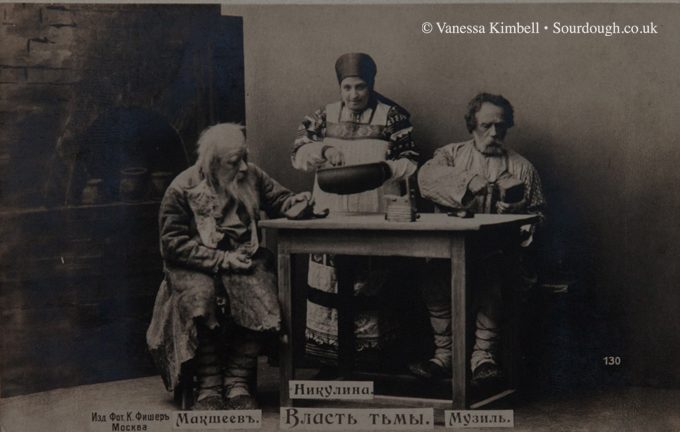Lesson Plan: The Unique Properties of Rye and Its Gluten Composition

Lesson Objective
To understand the biology and functionality of rye (Secale cereale), its gluten composition, and how it differs from wheat species such as spelt (Triticum spelta) and modern bread wheat (Triticum aestivum). This lesson explores why rye behaves differently in dough, its history, and its use in traditional baking.
Lesson Outline
Introduction
- Opening Question:
- “Why does rye dough feel sticky, dense, and less elastic compared to wheat dough, and how does its gluten composition explain this?”
- Key Takeaway:
- Rye’s gluten composition is fundamentally different from wheat, containing more soluble proteins and less gluten-forming glutenin, leading to unique dough properties.
Part 1: The Evolution and History of Rye
- Origins and Domestication:
- Rye originated in the Fertile Crescent but became more prominent in Northern and Eastern Europe around 4000 BC due to its ability to thrive in cold, poor soils.
- Unlike wheat, rye adapted to harsher climates and became a staple crop in regions like Scandinavia, Russia, and Germany.
- Cultural Significance:
- Rye became central to traditional breads like pumpernickel and sourdough rye, prized for its distinct flavour and long shelf life.
- Historically, rye bread was seen as the bread of the working class, while wheat was reserved for the wealthy.
Part 2: The Science of Rye Gluten
- What Is Gluten?
- Gluten in wheat is composed of two proteins: gliadins (extensibility) and glutenins (elasticity).
- Rye has gluten-like proteins, but they behave very differently. Its gluten structure is weak and cannot form the strong, elastic networks found in wheat.
- Key Proteins in Rye:
- Gliadin-like Proteins: Rye contains gliadin-like prolamins, but in much smaller amounts than wheat.
- Secalins: These are rye’s primary storage proteins, similar to wheat gliadins but less effective at creating extensibility.
- Albumins and Globulins: Rye has higher levels of these water-soluble proteins, which do not contribute to gluten structure but play a role in enzymatic activity and hydration.
- Why Is Rye Dough Sticky and Dense?
- Rye has a much lower glutenin content, meaning it lacks the elastic structure needed to trap gas effectively.
- Instead, rye relies on pentosans (complex carbohydrates) to absorb water and create a gel-like network that stabilises the dough.
- Rye’s dough matrix is driven more by starches and pentosans than by gluten proteins.
Part 3: Functional Properties of Rye Dough (10 minutes)
- Hydration and Stickiness:
- Rye absorbs more water than wheat due to its high pentosan content, which creates a sticky, gelatinous dough.
- The high enzymatic activity in rye can break down starches during fermentation, making careful handling essential.
- Fermentation and Structure:
- Unlike wheat, rye does not form strong gluten networks. Its structure relies on starch gelatinisation and pentosan bonding.
- Sourdough fermentation is critical for rye, as the acidity deactivates enzymes that can weaken the dough (e.g., amylase).
- Baking Behaviour:
- Rye dough produces dense, moist bread with a distinctive tangy flavour. The absence of strong gluten allows for a unique crumb texture.
Part 4: Comparing Rye to Wheat and Spelt (10 minutes)
| Property | Rye | Wheat | Spelt |
|---|---|---|---|
| Gluten Composition | Weak, low glutenin | Strong, high glutenin | Moderate, high gliadin |
| Water Absorption | Very high (due to pentosans) | Moderate | High |
| Dough Texture | Sticky, gelatinous | Elastic, stretchy | Extensible, soft |
| Fermentation Process | Requires acidity (sourdough) | Versatile (yeast or sourdough) | Flexible (yeast or sourdough) |
| Bread Characteristics | Dense, tangy, moist | Light, airy, elastic | Soft, slightly dense |
Part 5: Reflective Discussion (5 minutes)
- Guiding Questions:
- Why is rye dough so sticky and difficult to work with?
- Answer: Rye contains high levels of pentosans and low levels of glutenin, relying on starch and carbohydrate networks rather than gluten.
- Why does rye bread require sourdough fermentation?
- Answer: Rye has high enzymatic activity that breaks down starch during fermentation. Sourdough acidity slows these enzymes and stabilises the dough.
- How does rye’s gluten composition differ from wheat?
- Answer: Rye lacks the gluten-forming proteins (glutenin) found in wheat, relying instead on secalins, pentosans, and starch for structure.
- Why is rye dough so sticky and difficult to work with?
- Practical Implications for Baking:
- Rye dough is highly sensitive to water content and enzyme activity. Precision in hydration and fermentation is essential for successful baking.
Key Notes for Reference
- Rye Gluten Composition:
- Weak gluten-like proteins (secalins).
- Relies on pentosans and starch rather than a gluten network for structure.
- Fermentation and Baking:
- Sourdough fermentation is essential to stabilise rye dough.
- Acidity prevents enzymatic breakdown of starches during proofing.
- Comparison to Wheat and Spelt:
- Rye is stickier, denser, and less elastic due to its unique protein and carbohydrate composition.
- It requires specific techniques, such as sourdough fermentation, to produce stable and flavourful bread.
Conclusion (5 minutes)
- Rye stands apart from wheat and spelt due to its weak gluten structure and reliance on pentosans and starch for dough stability. Its unique properties demand precise handling and fermentation, but the result is a dense, moist bread with a distinctive tangy flavour. Understanding rye’s composition allows bakers to fully appreciate its role in traditional and modern bread-making.

